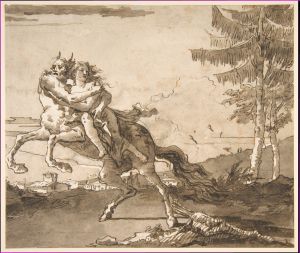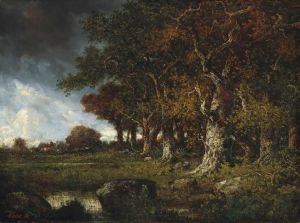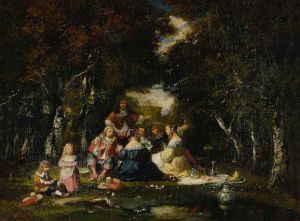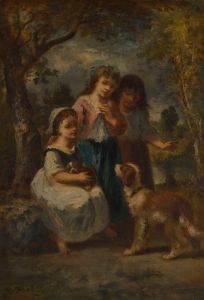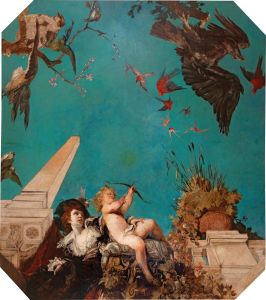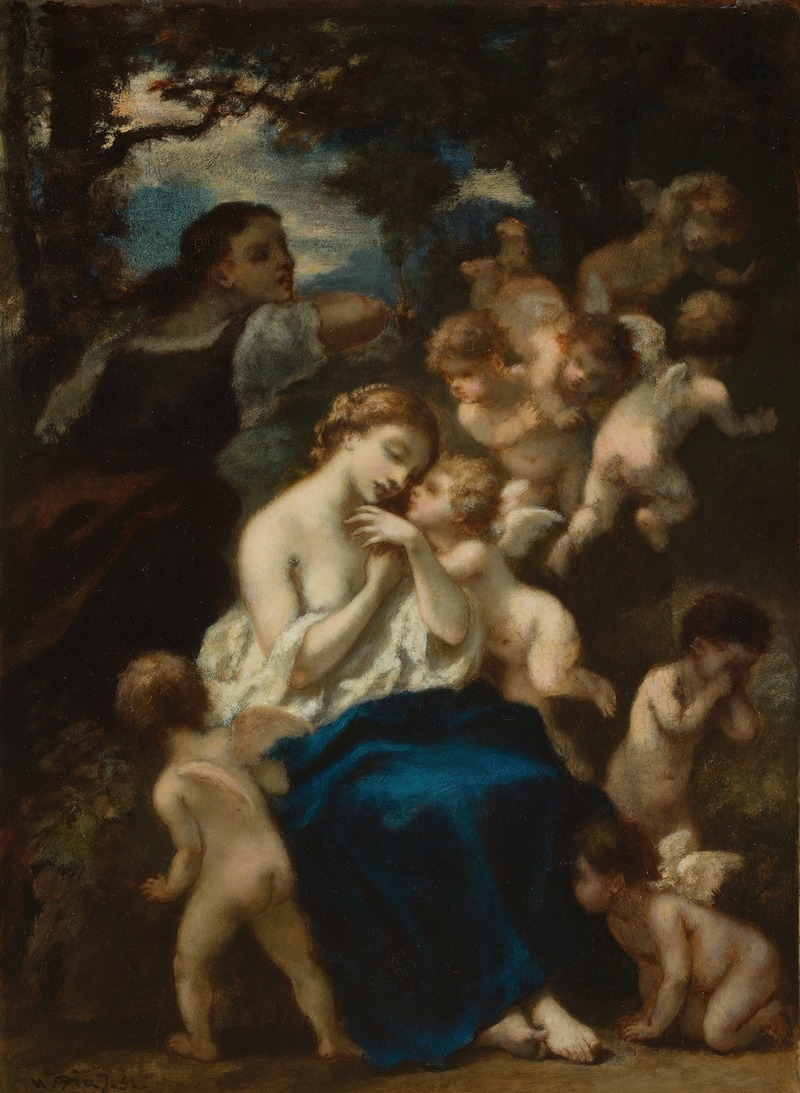
A nymph with cupids
A hand-painted replica of Narcisse-Virgile Diaz de La Peña’s masterpiece A nymph with cupids, meticulously crafted by professional artists to capture the true essence of the original. Each piece is created with museum-quality canvas and rare mineral pigments, carefully painted by experienced artists with delicate brushstrokes and rich, layered colors to perfectly recreate the texture of the original artwork. Unlike machine-printed reproductions, this hand-painted version brings the painting to life, infused with the artist’s emotions and skill in every stroke. Whether for personal collection or home decoration, it instantly elevates the artistic atmosphere of any space.
Narcisse-Virgile Diaz de la Peña was a prominent 19th-century French painter associated with the Barbizon School, a movement that emphasized naturalism and was a precursor to Impressionism. Diaz de la Peña was known for his rich use of color and his ability to capture the atmospheric effects of light and shadow in his landscapes and figure paintings. One of his notable works is "A Nymph with Cupids," which exemplifies his skill in combining mythological themes with his distinctive style.
"A Nymph with Cupids" is a painting that showcases Diaz de la Peña's fascination with romantic and mythological subjects. The painting depicts a nymph, a mythological spirit of nature imagined as a beautiful maiden, surrounded by cupids, who are often depicted as cherubic figures associated with love and desire. This theme was popular in the 19th century, reflecting the Romantic era's interest in classical mythology and its ideals of beauty and nature.
Diaz de la Peña's work is characterized by its vibrant palette and the lush, almost dreamlike quality of his compositions. In "A Nymph with Cupids," these elements are evident in the way he renders the figures and the surrounding landscape. The nymph is often portrayed with an ethereal quality, her form gracefully integrated into the natural setting. The cupids, with their playful and innocent demeanor, add a sense of whimsy and lightness to the scene.
The painting reflects Diaz de la Peña's ability to blend figure painting with landscape, a hallmark of his style. His landscapes often feature dense, richly colored foliage and a keen attention to the effects of light, which can be seen in the way sunlight filters through the trees or dances across the figures. This attention to detail and atmosphere helps to create a sense of depth and realism, even within the fantastical subject matter.
Diaz de la Peña's work was influenced by his contemporaries in the Barbizon School, such as Théodore Rousseau and Jean-François Millet, who were known for their realistic depictions of rural life and nature. However, Diaz de la Peña often infused his work with a more romantic and imaginative quality, as seen in "A Nymph with Cupids." This blend of realism and romanticism made his work appealing to a wide audience and contributed to his success as an artist during his lifetime.
The painting also reflects the broader cultural and artistic trends of the 19th century, a time when artists were increasingly interested in exploring themes of nature, mythology, and the human experience. The Romantic movement, in particular, emphasized emotion, individualism, and the sublime beauty of the natural world, all of which are evident in Diaz de la Peña's work.
Today, "A Nymph with Cupids" is appreciated for its artistic merit and its place within the context of 19th-century art. It serves as an example of Diaz de la Peña's unique ability to capture the beauty and mystery of mythological subjects while maintaining a strong connection to the natural world. The painting continues to be studied and admired for its technical skill, its vibrant use of color, and its evocative portrayal of a timeless theme.






